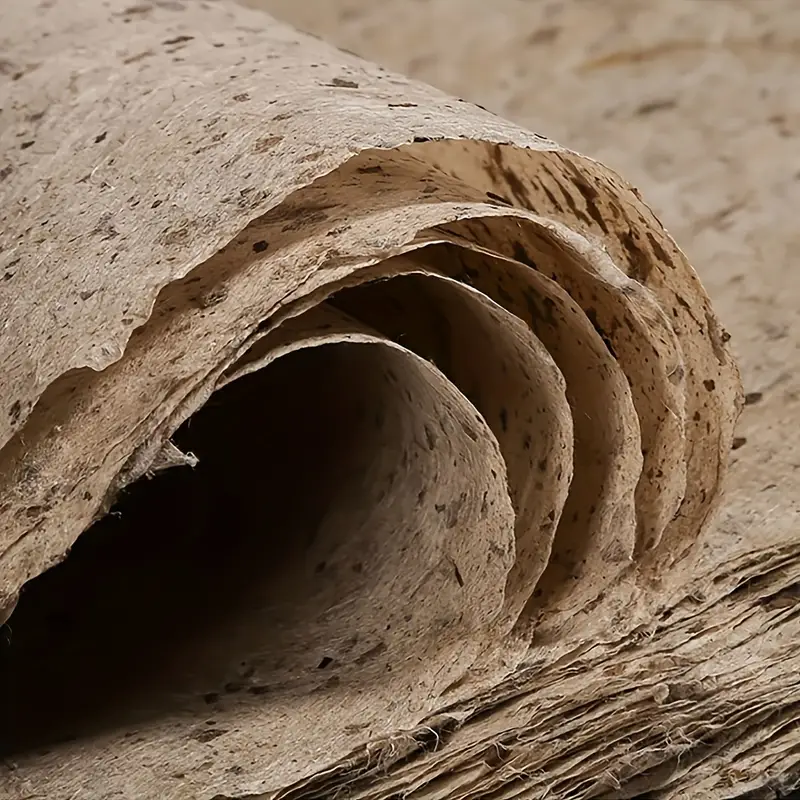Crafting and junk journaling enthusiasts are always on the lookout for unique materials to elevate their projects. One such material that has gained popularity in recent years is mulberry paper. Derived from the mulberry tree, this delicate and versatile paper offers a range of creative possibilities. In this blog post, we will explore the various uses for mulberry paper and how it can enhance your crafting and junk journaling endeavors.
Background on Mulberry Paper: Mulberry paper, also known as Kozo paper, originates from the bark of the mulberry tree, which is native to Asia. The long fibers of the tree are harvested, soaked, and processed into thin, lightweight sheets of paper. Due to its durability, flexibility, and unique texture, mulberry paper has become a favorite among artists and crafters.
Collage and Decoupage: Mulberry paper's inherent strength and translucent quality make it an ideal choice for collage and decoupage projects. Its delicate texture adds depth and dimension to mixed media pieces. Use it to layer images, quotes, and ephemera onto your journal pages or create stunning collages on canvas or wood. The thinness of the paper allows for seamless blending and integration of elements, creating a visually appealing and cohesive composition.
Handmade Cards and Invitations: Mulberry paper lends an elegant touch to handmade cards and invitations. Its natural fibers give a rustic and organic feel to the final product. Embellish your cards with torn or die-cut mulberry paper shapes, add delicate floral motifs, or use it as a backdrop for calligraphy or stamped sentiments. The paper's soft, textured surface provides a unique tactile experience and adds a touch of sophistication to your paper crafts.
Embellishments and Layering: One of the most exciting aspects of mulberry paper is its versatility for creating stunning embellishments and layers. Tear or cut the paper into shapes such as flowers, leaves, or feathers, and incorporate them into your projects. Mulberry paper can be easily manipulated and molded, allowing you to add intricate details to your junk journals, scrapbooks, or shadow boxes. Experiment with folding, pleating, or crumpling the paper to achieve various textures and effects.
Backgrounds and Texture: Mulberry paper's natural texture and warm hues make it a fantastic choice for creating captivating backgrounds. Use it as a base layer to add visual interest and depth to your junk journal or mixed media projects. Apply acrylic paints, inks, or watercolors over the paper to enhance its texture and create a unique backdrop for your artwork. Mulberry paper's ability to absorb and hold color produces stunning results, making it a must-have for any texture lover.
Paper Embroidery and Weaving: Mulberry paper's durability makes it suitable for paper embroidery and weaving techniques. Pierce the paper with a needle and thread to create intricate designs, patterns, or borders. Combine mulberry paper strips with other fibers or threads to form woven textures, adding a distinctive touch to your junk journals or fiber art creations. The versatility of mulberry paper in these techniques allows you to experiment and push the boundaries of traditional crafting.
Conclusion: Mulberry paper opens up a world of possibilities for crafting and junk journaling enthusiasts. Its unique texture, strength, and versatility make it a cherished material for creating stunning works of art. Whether you use it for collage, card making, backgrounds, or embellishments, mulberry paper adds an exquisite touch to any project. Embrace the beauty of this natural fiber and unleash your creativity as you explore the endless possibilities it offers.





